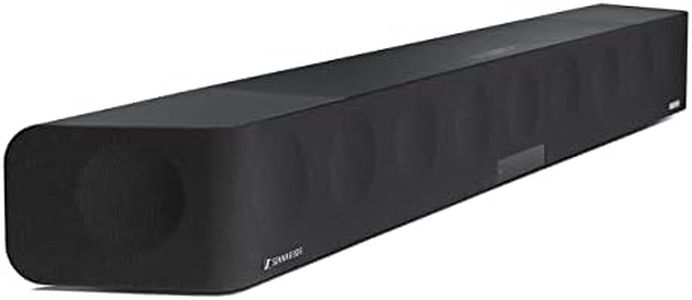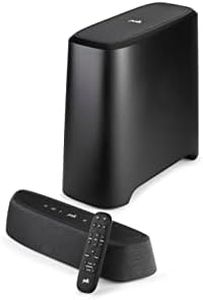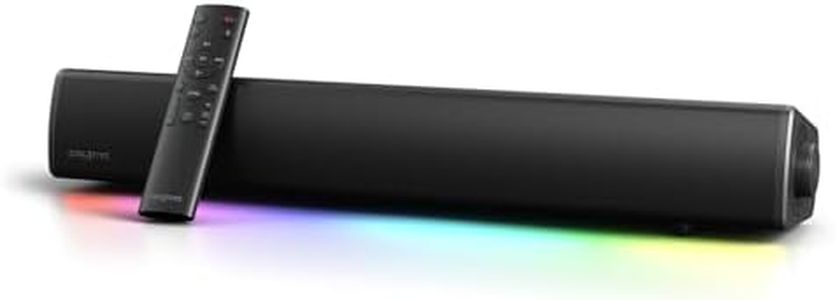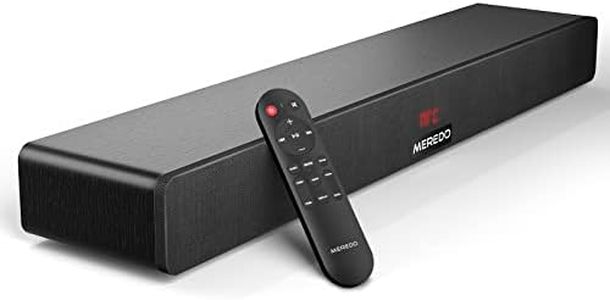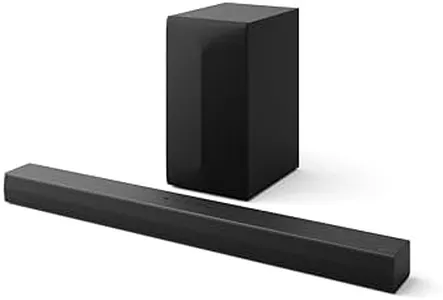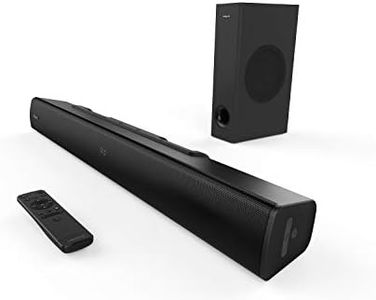We Use CookiesWe use cookies to enhance the security, performance,
functionality and for analytical and promotional activities. By continuing to browse this site you
are agreeing to our privacy policy
10 Best TV Sound Bars
From leading brands and best sellers available on the web.Buying Guide for the Best TV Sound Bars
Choosing the right soundbar for your TV can make a huge difference in your home entertainment experience. Soundbars are an easy way to significantly boost your TV's audio quality without the hassle of setting up multiple speakers around your room. When you're picking a soundbar, it's important to know what features and specifications will matter most based on your space, your viewing habits, and the kinds of content you enjoy. Reading specs and comparing models can seem confusing at first, but knowing what each specification means—and why it matters—will help you make a choice that fits your needs.Channel Configuration (e.g., 2.0, 2.1, 5.1)Channel configuration tells you how many audio channels (speakers) and if a subwoofer is included. For example, 2.0 means just left and right speakers, 2.1 adds a subwoofer for deeper bass, and 5.1 adds surround sound speakers. More channels can create a more immersive sound, particularly for movies and games. If you mostly watch regular TV or listen to music, a 2.0 or 2.1 might be enough. If you love action films or want a theater-like experience, a 5.1 or higher can give better surround sound.
Connectivity OptionsConnectivity refers to how the soundbar links with your TV and other devices. Typical options include HDMI ARC, optical, Bluetooth, and AUX. HDMI ARC is great for easy control and the best sound quality, while Bluetooth allows you to stream music from your phone. If your setup is simple, one or two connection types might be all you need. If you have multiple devices or want flexibility, choose a soundbar with several options.
Sound Modes and EqualizationSound modes let you adjust the audio for different types of content, like movies, news, or music. Some soundbars have settings that boost voice clarity, add bass, or create virtual surround effects. If your viewing includes a mix of talk shows, sports, and movies, customizable sound modes can help you get the best sound every time. Look for soundbars with a simple remote or app so you can easily switch modes.
Subwoofer Type (Built-in vs. External)A subwoofer handles the deep bass notes in audio. Some soundbars have a subwoofer built into the main body, while others come with a separate external subwoofer, often wireless. If you have limited space or want a neat setup, a built-in subwoofer can be convenient, but it might not deliver very deep bass. External subwoofers provide stronger bass, which is great for movie lovers or music fans who like a rumble, but they do take up more room.
Size and DesignThe size and design of your soundbar should match your TV and fit your room. A soundbar that's too big may look awkward, while one that's too small may not create a balanced soundstage. Consider the width of your TV and where you’ll place the soundbar (on a stand or mounted on a wall) to make sure it fits neatly and doesn't block the screen or sensors.
Voice Assistant and Smart FeaturesSome soundbars offer built-in voice assistants like Alexa or Google Assistant, as well as features like Wi-Fi streaming, multi-room audio, or integration with smart home systems. If you enjoy hands-free control or want to play music throughout your home, these smart features can add convenience and flexibility. If you’re not interested in smart features, they may not be necessary for your needs.
Audio Formats SupportedSoundbars can support various audio formats like Dolby Atmos, DTS:X, and others. These formats offer more immersive and richer sound, especially with compatible content such as new movies or certain streaming services. If you want a cinematic experience and watch a lot of movies or high-definition content, look for a soundbar that supports these advanced formats. For everyday TV or casual listening, basic audio support will usually be enough.
